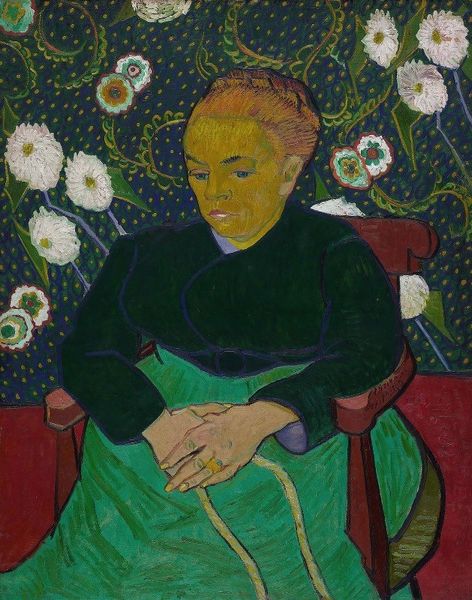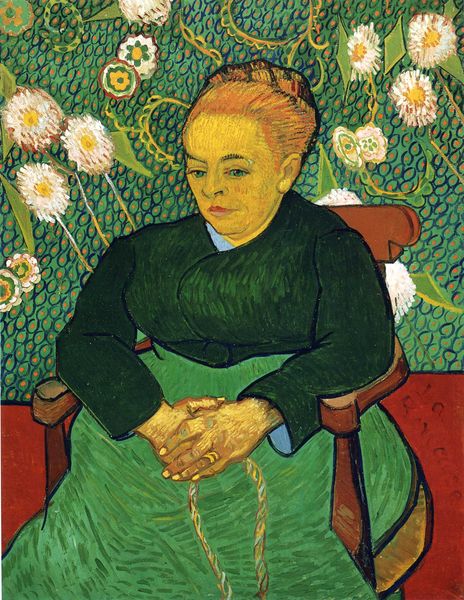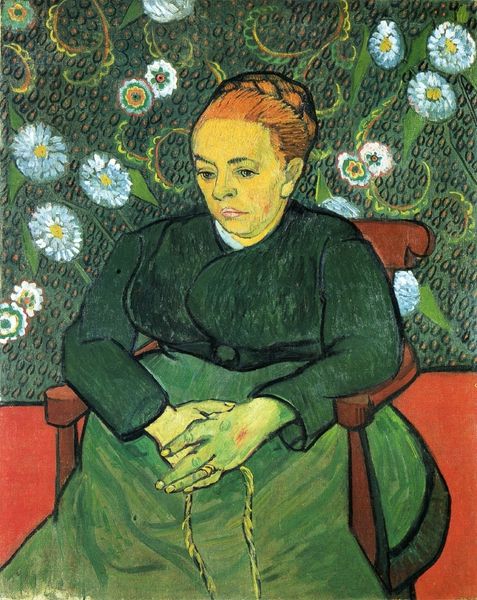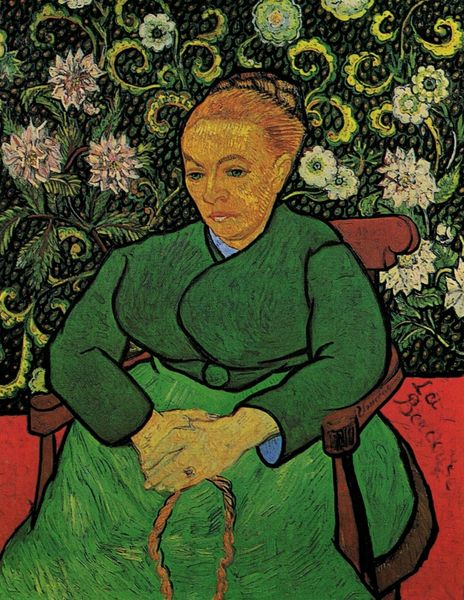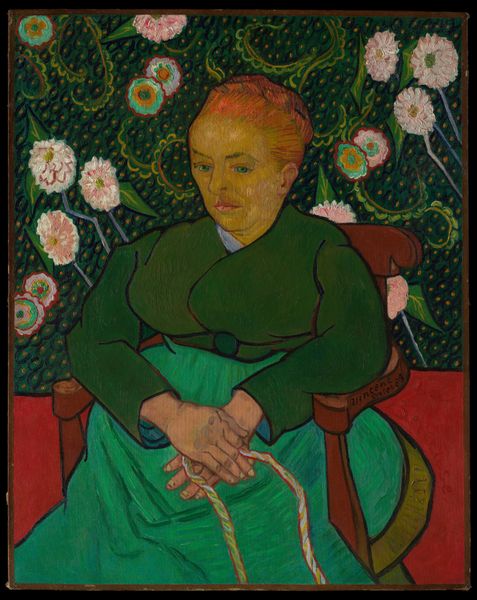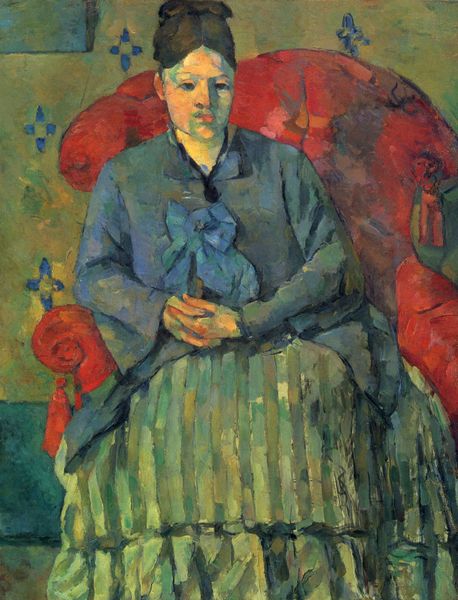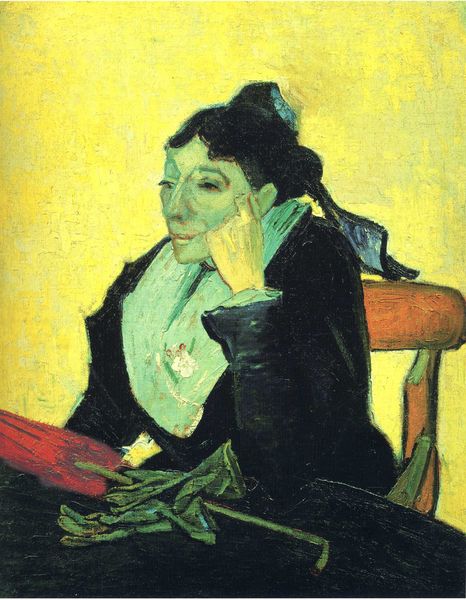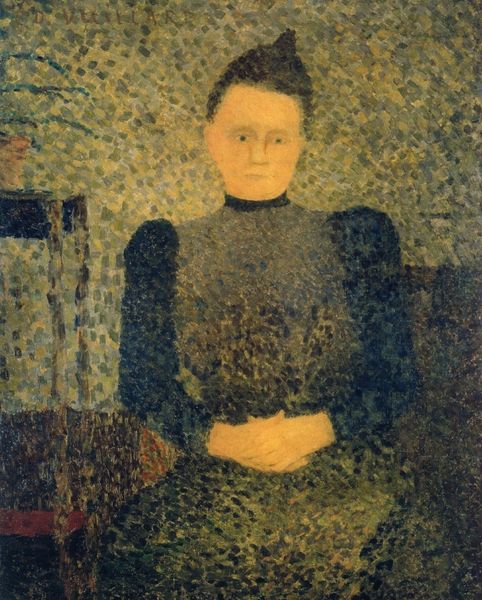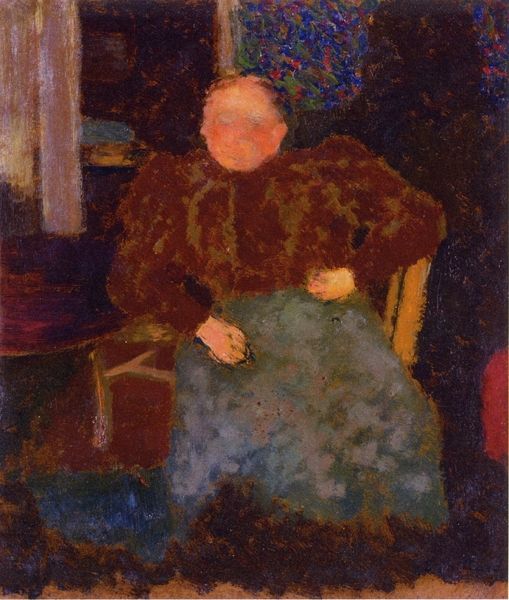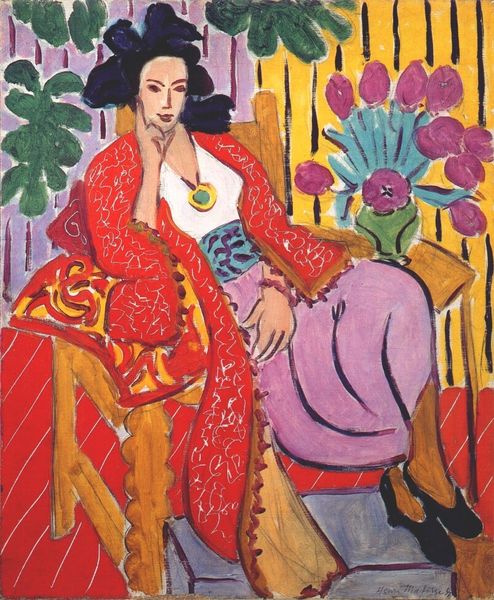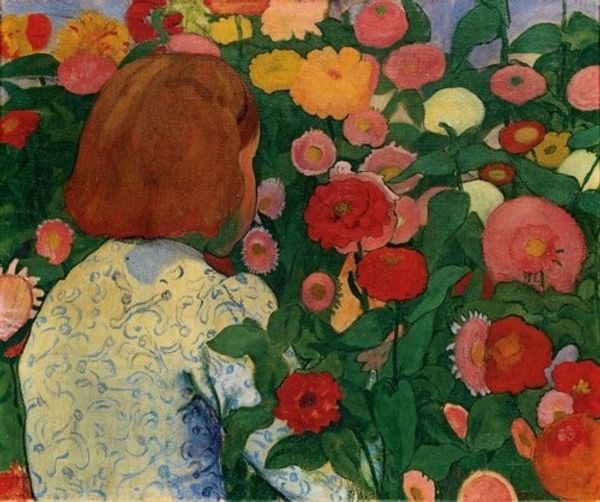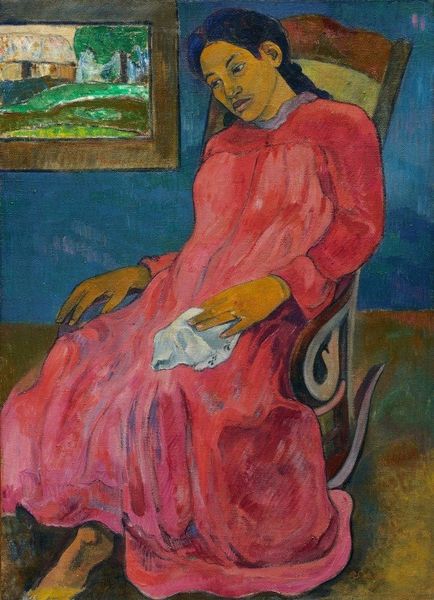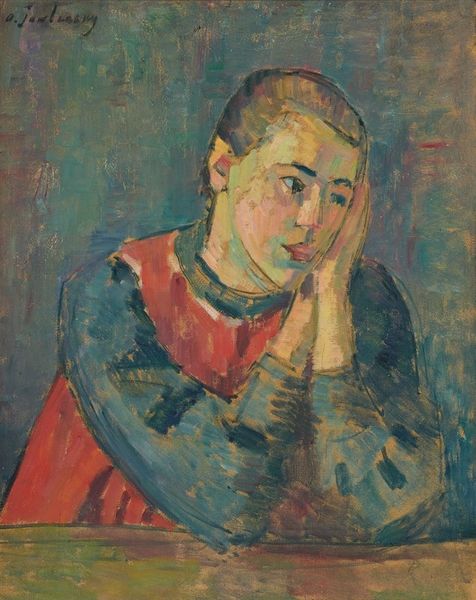
oil-paint, impasto
#
portrait
#
oil-paint
#
figuration
#
impasto
#
post-impressionism
Dimensions: 93 x 74 cm
Copyright: Public domain
Editor: This is Vincent van Gogh's "Madame Roulin Rocking the Cradle (A lullaby)", painted in 1889. It's an oil painting with thick, almost sculpted paint. I'm struck by how domestic and intimate it feels, even with those vibrant colors. What do you make of it? Curator: What I immediately observe is the raw materiality of the impasto technique. Consider the societal role of women and labor. Van Gogh elevates Madame Roulin, not through idealized representation, but by drawing attention to the very physical act of painting itself. He’s turning the 'low' craft of painting into 'high' art, challenging that division. Look at the repeating floral patterns; where might those originate? Editor: It's wallpaper, right? So you're saying he is deliberately incorporating mass-produced materials into fine art, and that elevates both the subject and the artform? Curator: Exactly! And think about the socio-economic context. Wallpaper became increasingly available to the working class during this period, suggesting domestic comfort and aspiration. By rendering this in paint, Van Gogh blurs the lines between handmade and machine-made, luxury and the everyday. The impasto mimics a tactile, handmade quality contrasting the implied wallpaper. Where does this tension lead your interpretation? Editor: So, it’s not just a portrait, but a statement on class and consumerism using the materials themselves. I’m seeing how the painting acts almost like an object lesson, about the means of production. I initially thought of it as just this lovely image of motherhood... Curator: But consider that initial impression in light of production and materiality. It shifts, doesn’t it? The consumption of images of idealized women gets reconsidered here by recognizing the work behind those images. Editor: Definitely, seeing it that way has changed my perception entirely. I now see Van Gogh not just portraying her, but making a statement through his technique. Curator: Precisely. And that's the power of analyzing art through its material and social contexts.
Comments
No comments
Be the first to comment and join the conversation on the ultimate creative platform.
